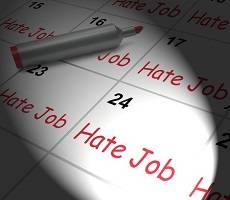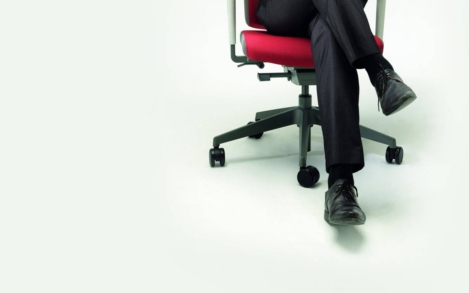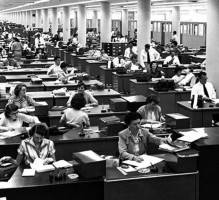November 27, 2015
Over a third of UK workers are miserable at work and most plan to leave 0
 Only 35 percent of UK workers are happy with their job, and over a third (39 percent) admit that they feel miserable at work. In a new survey by Workwear Express of over 1,000 people, just 14 percent said they planned to stay in their current job for the next year. This appears to be reflected in the amount of sickness they take, with 25 percent admitting that they’ve taken sick leave from work due to being so unhappy. Poor management was seen as the biggest contributor to an employee’s low sense of satisfaction at work, as just over 31 percent of those polled agreed that being badly managed was their biggest issue in the workplace. However, having a heavy workload was a close second, with 29 percent of people citing this as the reason for their unhappiness. A third (35 percent) of those polled said that Monday was the most miserable day of the week to work.
Only 35 percent of UK workers are happy with their job, and over a third (39 percent) admit that they feel miserable at work. In a new survey by Workwear Express of over 1,000 people, just 14 percent said they planned to stay in their current job for the next year. This appears to be reflected in the amount of sickness they take, with 25 percent admitting that they’ve taken sick leave from work due to being so unhappy. Poor management was seen as the biggest contributor to an employee’s low sense of satisfaction at work, as just over 31 percent of those polled agreed that being badly managed was their biggest issue in the workplace. However, having a heavy workload was a close second, with 29 percent of people citing this as the reason for their unhappiness. A third (35 percent) of those polled said that Monday was the most miserable day of the week to work.










 In years gone by, a ‘one size fits all’ approach to office design might have been the norm, but as the decades have progressed, so too have the options available to businesses designing ‘homes from home’ for their office-based workforces. As new interpretations of the office environment proliferated, so the open plan model came to into being and eventually evolved into the default office design model. This initially brought greater variety than ever before but, ultimately, a one size fits all mentality in
In years gone by, a ‘one size fits all’ approach to office design might have been the norm, but as the decades have progressed, so too have the options available to businesses designing ‘homes from home’ for their office-based workforces. As new interpretations of the office environment proliferated, so the open plan model came to into being and eventually evolved into the default office design model. This initially brought greater variety than ever before but, ultimately, a one size fits all mentality in 











October 22, 2015
Seven ways to make your office work for different workstyles 0
by Brittney Herrera • Comment, Flexible working, Wellbeing, Workplace design
More →